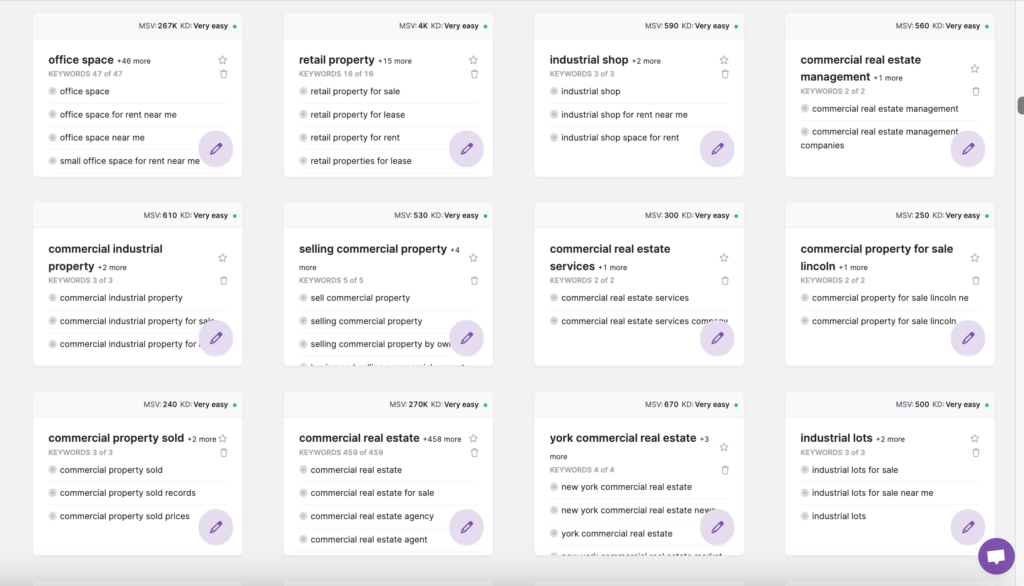Topic Clusters and Pillar Pages: A Complete Guide
Pillar pages and topic clusters have become increasingly popular in the world of SEO, offering a powerful way to boost your website’s search engine rankings. This approach […]
Pillar pages and topic clusters have become increasingly popular in the world of SEO, offering a powerful way to boost your website’s search engine rankings. This approach to SEO content enables marketers to create comprehensive content hubs with multiple related topics, linking them together to create a powerful library of content that optimizes their website for more overall visibility. Continue reading to learn more about pillar pages and topic clusters as well as how our SEO agency can help you use a topic cluster model to your advantage.
What are Topic Clusters?
For starters, topic clusters are a popular content marketing strategy used to create an information hierarchy that is easily navigable for readers. They are made up of the main page, known as a pillar page, and several other pages, known as cluster pages. The pillar page serves as an overview of a specific subject while the cluster pages provide more detailed information.
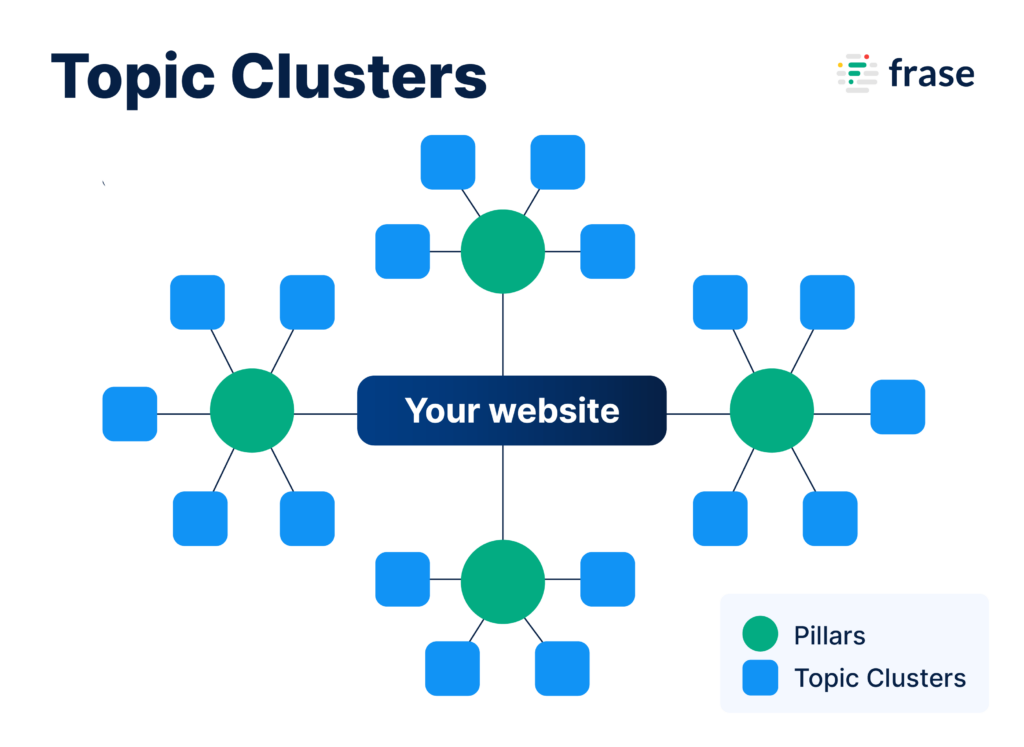
Topic clusters are connected by internal links, which allow readers to easily find other topically-related content. This also helps to keep readers on a website as well as improve their understanding of the subject.
For example at LinkGraph, we have a topic cluster on our website centered on link building, which is one of our agency services. Our link building page is considered the “pillar page,” and we have created a variety of “cluster content,” that explores that main topic more in-depth. Some of the blog posts in that cluster include:
- “12 Link Building Strategies for This Year”
- “How to Choose the Best Quality Link Building Services”
- “White Hat Link Building Versus Links to Avoid”
All of these blog posts link back to the primary pillar page, helping create a cluster of content that Google understands is topically related and full of in-depth information about the topic of link building.
Topic clusters can help to increase website visibility in search engines, as their algorithms tend to favor websites that are well-organized, authoritative on a topic, and have a strong internal linking profile.
Examples of Topic Clusters
As an example, let’s say that your business is a personalized travel agency catered toward ethical tourism.
One of your pillar content pieces would include a page optimized for the keyword “ethical travel companies.” Within the pillar content pieces, you’ll also want to target keywords like “ethical travel agency” or “eco travel company.” The total number of topic clusters on a website will be determined by the services the business offers.
For example, you can create pages about sustainable travel packages or reasons why ethical travel is important. Your business can also create another content cluster around a larger topic, such as how to become a more “sustainable traveler.” This cluster could potentially explore the following topics:
- How to Fly Sustainably
- Tips for Respecting Local Cultures as a Traveler
- 4 Ways to Travel Ethically
- How to Become a Responsible Traveler
This is just one example of how you can create a well-structured, easy-to-scan cluster. This makes it easier for searchers to crawl, and it makes it easier for potential customers to browse your cluster topics. It’s all about diving deeper into the informational side of your services and showing a search engine that you can provide value to your target audience.
Do SEO Topic Clusters Improve Rankings?
Yes. In the past, websites would simply create blog posts to match popular keyword phrases. Each webpage would be optimized to rank for a specific keyword, and there was no attention placed on the content of the site in its entirety.
But search algorithms began to change. The updates made them better at determining the expertise of a website. Now, they search for in-depth content, shifting their focus from keywords to topic areas. As a result, content strategists have now moved toward using topic clusters to organize their content. By building a content plan and implementing it appropriately, strategists have learned how to create a significant impact on SEO results, improving overall site authority.
With the current state of algorithms, not using a topic cluster strategy would put your webpage at a disadvantage, particularly if your competitors are enterprise-level. Topic clusters exhibit the quality indicators that Google looks for, and creating content with these qualities will produce the best results.
- In-depth, topically-rich content
- Content that exhibits industry expertise
- Content with internal links to other relevant content
- Created by expert authors who have experience in the topic
- Articles that fall under the website’s primary niche
It’s important to realize that topic clusters are a long-term strategy that allows your site to gain search rankings for broad, overarching keywords. Building a content cluster out on your website won’t happen overnight. In the beginning, topic clusters can help your website gain search traffic for longer tail keywords that are less competitive and elevate the performance of pillar content for more competitive, higher search volume keywords in the long term.
Topic clusters will also help your brand build E.E.A.T. (Experience, Expertise, Authority, Trustworthiness) in certain topics so that Google sees your website as an industry leader.
How Do I Use Topic Clusters to Improve SEO?
To create a successful SEO topic cluster, it is important to first research relevant keywords and phrases using a keyword research tool. This will help identify the topics that are most relevant to your website’s target audience. By creating a cluster of related topics, the website’s SEO will improve, as it provides more opportunities for search engines to index and crawl the website’s pages.
Below, you’ll find step-by-step instructions on how you can use topic clusters to improve your search engine optimization.
How to Build Topic Clusters on My Website
If you want to build topic clusters on your website, here are the following steps to take:
- Identify your primary keyword targets for your pillar pages and topic clusters
- Plan out your pillar page and determine subtopics with related terms and smaller search volumes.
- Create the cluster pages using the subtopics you’ve listed.
- Build your pillar page for the main hub of content.
- Start linking your cluster pages and repeat the process.
Look below to find a more detailed breakdown of each step.
Keyword Research
Begin by choosing a topic and doing some keyword research. This topic area should be relevant to your products, services, content, or areas of expertise. For example, if you are a real estate broker, some relevant topics may be “real estate agents,” “commercial real estate,” or “investment properties.”
You can use the content planner tool from Search Atlas to help you identify possible subtopics for your topic cluster.
For example, the following keyword clusters were provided from the keyword input, “commercial real estate.”
You can also use the built-in AI content generator to help you develop a relevant title for your cluster content. For example, here is a suggested article title for the keyword cluster “small warehouse space.”
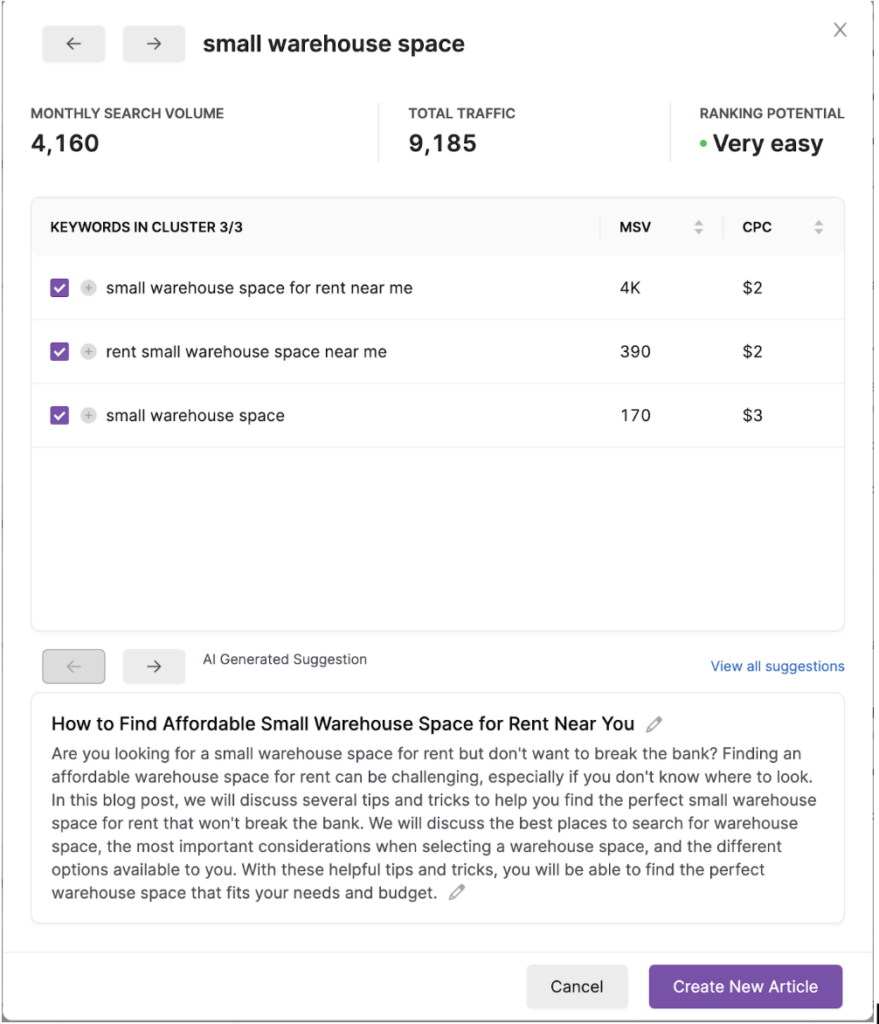
Content Creation
Once you’ve identified keywords and a blog topic idea, it’s time to start creating high-quality content. This is essential for every website page, and you’ll want to use the appropriate list of related keywords provided by the content planner. When creating any web page, it’s important to make sure that it’s well-optimized for your target keywords, so make sure to use a content optimizer like the SEO Content Assistant to confirm your content has strong ranking potential.
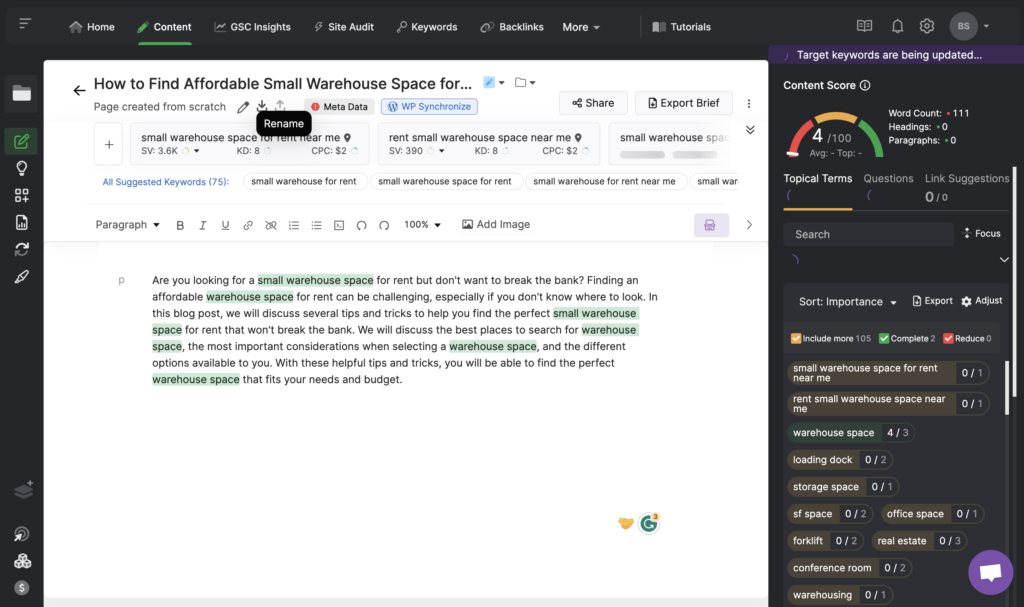
This tool will show you recommended focus terms and internal links to include in your content in order to improve its topical depth. If it’s going to rank well, your cluster content will need to provide value and meet the search intent of your audience.
Add Internal Links
The final step is to link your cluster content to your pillar page. This means creating links from your pillar landing page to your other content pages, and from your other content pages back to your landing page. You can also link to other pages within that same cluster.
Internal linking is an important part of the SEO topic cluster optimization process, as it helps to establish the overall hierarchy of your content. By following these steps, you can create a well-optimized topic cluster for your website. And by doing so, you can improve your website’s search engine ranking and attract more website visitors.
Repeat the Process
You can continue building out topic clusters on your website for as many topic areas that have relevance to your products or services. For example, here at LinkGraph, we have topic clusters related to our primary agency services, including link building, content marketing, technical SEO, and more.
Eventually, your website will look like this:

4 Additional Tips for Creating Topic Clusters
Here are some things to keep in mind to improve the performance of your topic clusters even more.
1. Focus on Creating a High Quality Pillar Page
Creating a pillar page is a bit different from creating a traditional blog post. This page aims to offer well-organized content that keeps visitors on the site longer and provides better signals to Google that your site is authoritative. It’s essential to create a well-thought-out pillar page to drive up engagement, increase page views, and appear as an expert on a particular subject.
2. Link to your Pillar Pages from your Homepage
The entire goal of a topic cluster is actually to elevate the rankings of your pillar pages. Those pillar pages should serve as the top of the cluster hierarchy, and you will want to be sending link juice from your homepage directly to them.
As a general rule, pillar pages should target more competitive keywords while your cluster pages target long-tail versions of keywords that represent subtopics of that topic area. Again, your pillar page is the most important, and you want your cluster content to elevate those pillar pages, not compete with them.
3. Be Careful with your Internal Links
Linking to a pillar page of another topic cluster may confuse search engine crawlers about which page is the most important. Although you may want to link to pages outside of the topic cluster, avoid linking to a pillar page of a separate cluster.
4. Watch out for Keyword Cannibalization
When using a topic cluster strategy incorrectly, it can sometimes result in keyword cannibalization. This occurs when multiple web pages on a single website contain similar keywords or phrases and therefore Google doesn’t know which one it should promote. Search engines will then often prioritize the page with the most optimized content over the other pages, resulting in the other pages not appearing in search results.
When identifying cluster content, make sure that your subtopics are distinct enough for search engines to understand they need to be promoted for a different set of keywords. If you end up experiencing some type of keyword cannibalization, you can correct this by combining some of your similarly focused cluster content into one page.
Then, add 301 redirects from those old pages to the newer, more comprehensive page.
How to Track the Performance of an SEO Topic Cluster
You can use the GSC Insights tool in your Search Atlas dashboard to track the performance of your topic clusters. This can help you get a good idea of how your website is performing for the key “topic areas,” that search engine crawlers associate with your website.
Navigate to the “Page Groupings,” feature and start assigning your topic cluster content to the same group as the accompanying pillar page. In the below example, you’ll see I created page groupings for three primary topic clusters that we have built out on the LinkGraph website – Link Building, Technical SEO, and Content Creation.
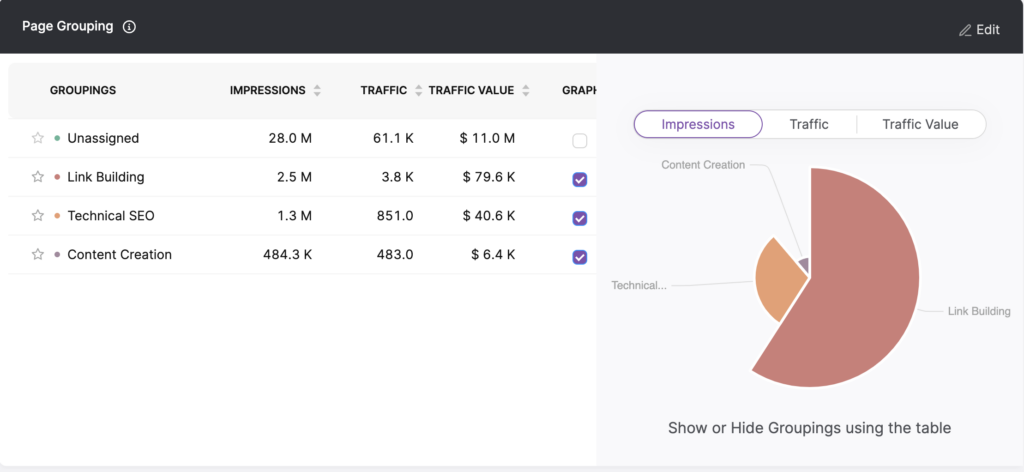
From the above data, I can see that our link building topic cluster is performing very well, meaning Google sees our website as authoritative in this topic area. If we add new link building content to our website, Google is more likely to promote it, as we have already proven ourselves authoritative in this topic area.
Adding more cluster content to our Technical SEO and Content Creation, as well as investing in link building to those content clusters, will help Google start seeing us as more authoritative in those sub-niches of SEO as well.
Conclusion
Remember that SEO topic clusters do not happen immediately and require consistent content creation efforts. However, taking the time to build out all of these pieces of content can have drastic impacts on your organic rankings and help Google rank your web pages for years to come.
If you need help developing a consistent content creation process for your brand, consider outsourcing your content writing to an agency.










































































